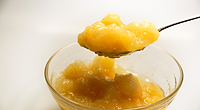GEA Introduces Aseptomag LV Leakage Valve for ESL Foods

GEA is expanding its valve portfolio with the GEA Aseptomag® LV leakage valve. The mixproof, double-seat valve is designed for manufacturers of foods and beverages, as well as pharmaceutical products, who maintain high safety standards in their UltraClean process lines. Typical examples are products with an extended shelf life (ESL) such as soft drinks, fruit juices, and milk-based and lactic acid fermented products, along with plant-based alternatives sold chilled by retailers. Focusing on equipment flexibility, the design features significantly mitigate the risk of contamination in this hygiene class. In addition, products become more durable, with less preservatives.
UltraClean hygiene class with enhanced safety requirements
The new leakage valve closes the gap in GEA’s valve portfolio between media that need to be processed hygienically and those where a consistently aseptic process is required. The former applies to applications with lower microbial risk, and the latter to highly sensitive products used as for medical and infant feeding purposes.
“Most customers create products that are at the second-highest hygiene level, ‘UltraClean.’ These products carry a greater hygiene risk than classic hygienic applications, but they still have no need for the high-end version of a complete aseptic process chain,” explains Pascal Bär, Senior Director Product Management and Engineering, Aseptic Valve, GEA. This means that, for ESL products, like ice tea, fruit juice, fruit yoghurt and ESL milk, where completely aseptic processes are not used, the area between the two valve seats no longer has to be designed as a sterile chamber. The valve’s features also make it suitable for processes with similar requirements outside the food industry. One example is the production of aseptic water for injection (WFI) in the pharmaceutical industry.
Keeping an eye on maximum safety and operating costs
Just like the entire GEA Aseptomag range, the new LV valve uses stainless steel bellows. These block microorganisms from being drawn uncontrollably into the product chamber, which keeps the process and the product safe. With hermetically sealing valve stems, bellows valves achieve a higher hygienic standard, which makes for better product quality and a longer minimum shelf life.
“We've found an ideal combination of technical safety and cost-effectiveness with Aseptomag LV. The operating costs over the entire service life of the valve were already taken into account during development,” notes Bär. Thanks to its dimensions, the compact double-seat valve for ESL processes takes up less space and is easier to install and maintain than aseptic alternatives. Technical features like the backstroke barrier can be easily retrofitted without the need to replace the actuator or other existing equipment.
These features protect manufacturers with UltraClean processes from mixing incompatible materials:
- GEA offers a single-seat lift for the leakage valve in the standard version so that both seats can be individually controlled for precise routing of product flows and for cleaning all areas that come into contact with the product—a flexibility boost in plant design for manufacturers.
- The special material composite of the stainless steel bellows for GEA Aseptomag valves is durable, as well as flexible.
- The bellows reliably prevents the phenomenon known as the elevator effect, where micro-organisms can be drawn into the product chamber in an uncontrolled manner. The bellows is inseparably welded to the surrounding components inside the valve that come into contact with the product, so that no clamping points are exposed to dynamic stress. This minimizes the residual risk of microbial contamination. The leakage chamber is also open to the atmosphere, facilitating installation and operation in the process plant.
GEA | www.gea.com
Looking for a reprint of this article?
From high-res PDFs to custom plaques, order your copy today!








